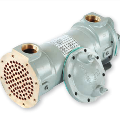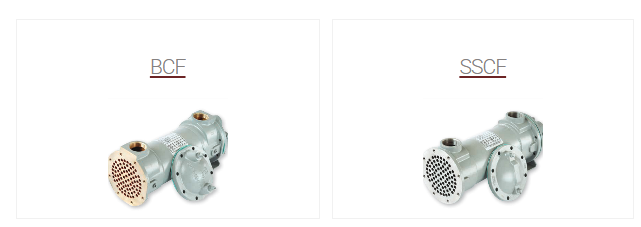The efficiency, lifetime, and general performance of industrial heat transfer systems depend much on the choice of suitable materials for heat exchanger components. The choice of materials has become more important than ever given growing need for better efficiency and dependability in industrial operations. Every element of a heat exchanger parts has to resist certain running circumstances while nevertheless preserving ideal heat transfer capacity. This thorough guide ensures long-term dependability and performance by looking at the several elements to take into account when choosing materials for different heat exchanger components.

Recognizing Material Needs for Essential Components
The choice of materials for the critical components of a heat exchanger determines its efficiency mostly. Operating environment and process needs must be precisely matched to tubes, tube sheets, shells, and other heat exchanger components. Depending on their exposure to varied process conditions, certain parts of a heat exchanger could call for different materials. Material selection is highly influenced by chemical exposure, pressure changes, and temperature fluctuations. Materials chosen must strike a compromise between mechanical strength, thermal conductivity, corrosion resistance, and economy of cost.
Characteristics of Materials and Performance
Choosing suitable heat exchanger components depends on an awareness of the basic qualities of materials. Heat transfer efficiency is directly related to thermal conductivity; mechanical strength determines capacity to resist operating pressures and thermal strains. Different grades of copper alloys, stainless steel, and specialist materials combine qualities fit for particular uses. Design of the heat exchanger has to take into account elements including compatibility with process fluids, thermal expansion coefficients, and fatigue resistance. Potential degradation processes include erosion, corrosion, and stress corrosion cracking should also be considered in material choice.
Chemistry Compatibility and Corrosion Resistance
When choosing materials for heat exchanger components, corrosion resistance usually takes front stage. Different operating conditions and process fluids might produce several corrosion mechanisms that need to be controlled with appropriate material choice. Parts of heat exchangers exposed to corrosive media need careful thought about material compatibility. Corrosion behavior is affected by pH levels, fluid composition, temperature, and flow velocities among other things. The choice procedure has to take into account both pitting and crevice corrosion as well as overall rates of corrosion.
Pressure and Temperature Considerations
Selection of materials for heat exchanger components is highly influenced by operating temperatures and pressures. High-temperature applications call for materials that, at high temperatures, retain their mechanical qualities and corrosion resistance. Various heat exchanger components could encounter different thermal loads and temperature gradients. At working temperatures, the material choice has to take into account elements including thermal conductivity, creep resistance, and thermal fatigue. The required mechanical characteristics and material thickness in pressure-containing components depend on the pressure requirements.
Financial Considerations and Cost Analysis
The financial factors of material choice for heat exchanger components demand thorough evaluation of both long-term performance and first costs. Although some materials could have more initial expenses, their better performance and lifetime will help to reduce lifetime costs. The choosing procedure should take maintenance needs, fabrication expenses, and material availability into account. While certain specialist materials might show great performance, they could cause longer lead times for spare parts or more replacement prices. The materials selected should strike a compromise between financial restrictions and performance criteria.
Manufacturing and Fabrication Issues
Material selection depends much on the manufacturability of heat exchanger parts. Various materials have different manufacturing constraints and needs that should be taken into account during the design process. Manufacturing costs and quality are affected by machining qualities, forming ability, and welding compatibility. The design of the heat exchanger has to consider fabrication techniques fit for the chosen materials. Certain materials could need particular handling or processing methods to keep their qualities and performance traits.
Needs for Maintenance and Inspection
Maintaining and inspecting heat exchanger components affects material choice choices. Different materials could call for particular maintenance practices or inspection methods to guarantee ongoing dependability. Heat exchanger component materials should be chosen with consideration for elements including repair capacity, cleaning convenience, and access to inspections. Certain materials could be more prone to particular kinds of damage or degradation, hence more frequent inspection or maintenance is necessary. Furthermore taken into account should be the availability of suitable tools and personnel for maintenance and inspection.
Sustainable Environmental Impact
Material choice for heat exchanger components is becoming to take environmental factors more and more relevance. One has to consider the effects on the surroundings of material manufacture, application, and disposal. Some materials might consume less energy during manufacturing or show superior recyclability. Parts for heat exchangers should be chosen with regard for their whole lifetime environmental effect. Materials’ lifetime and durability can also help to lower environmental effect by means of less regular replacement and maintenance.
In conclusion
The choice of materials for heat exchanger components calls for a thorough awareness of several elements including running circumstances, performance criteria, and financial concerns. The choice of the appropriate materials for every component determines greatly the effectiveness of industrial heat transfer systems. By means of a methodical approach to material selection considering all pertinent criteria, one can guarantee best performance and value during the lifespan of the equipment. Understanding these challenging needs, Kinetic Engineering Corporation provides knowledge in choosing and using the most suitable materials for different heat exchanger uses, therefore guaranteeing best performance and long-term dependability.



